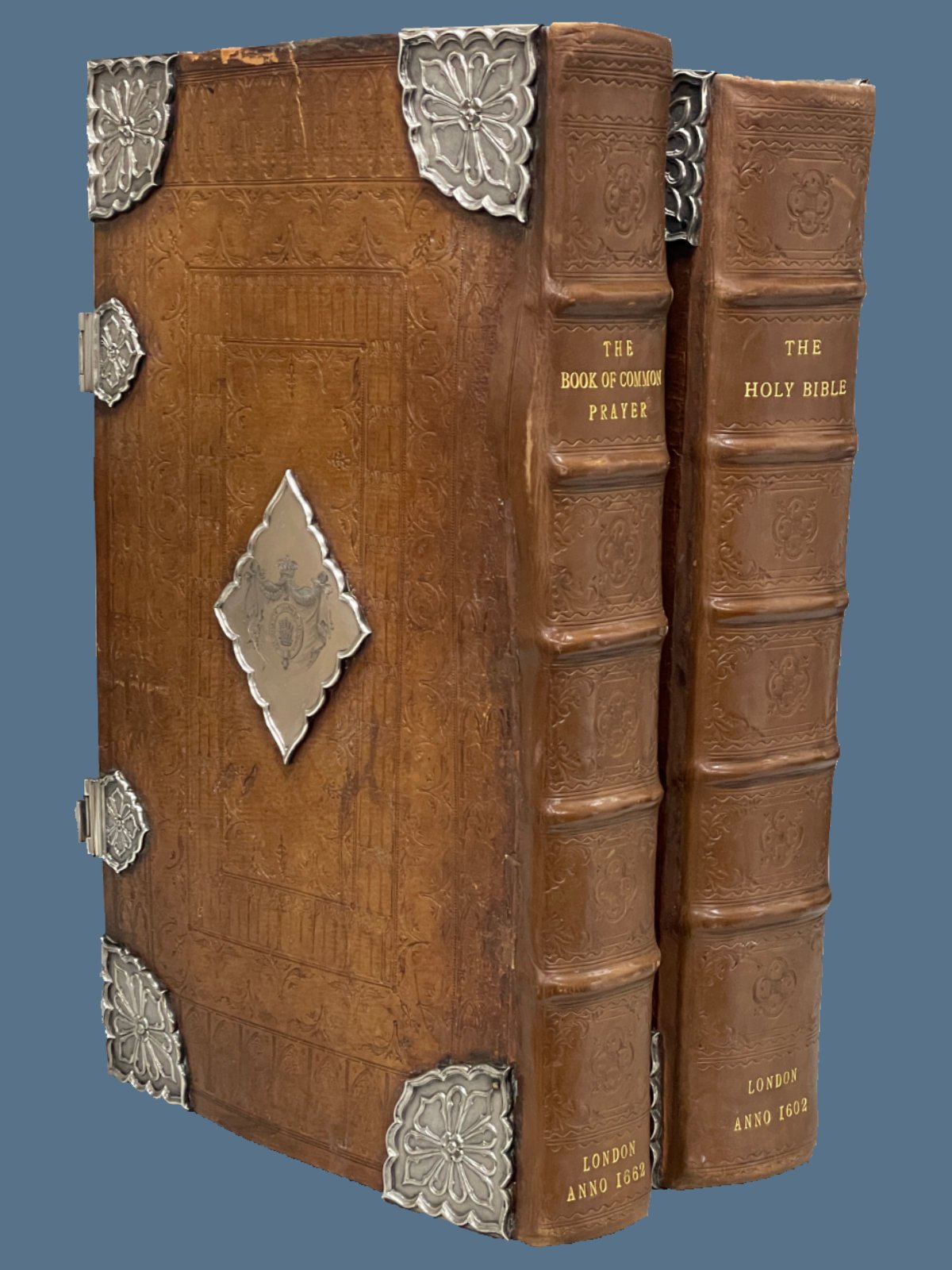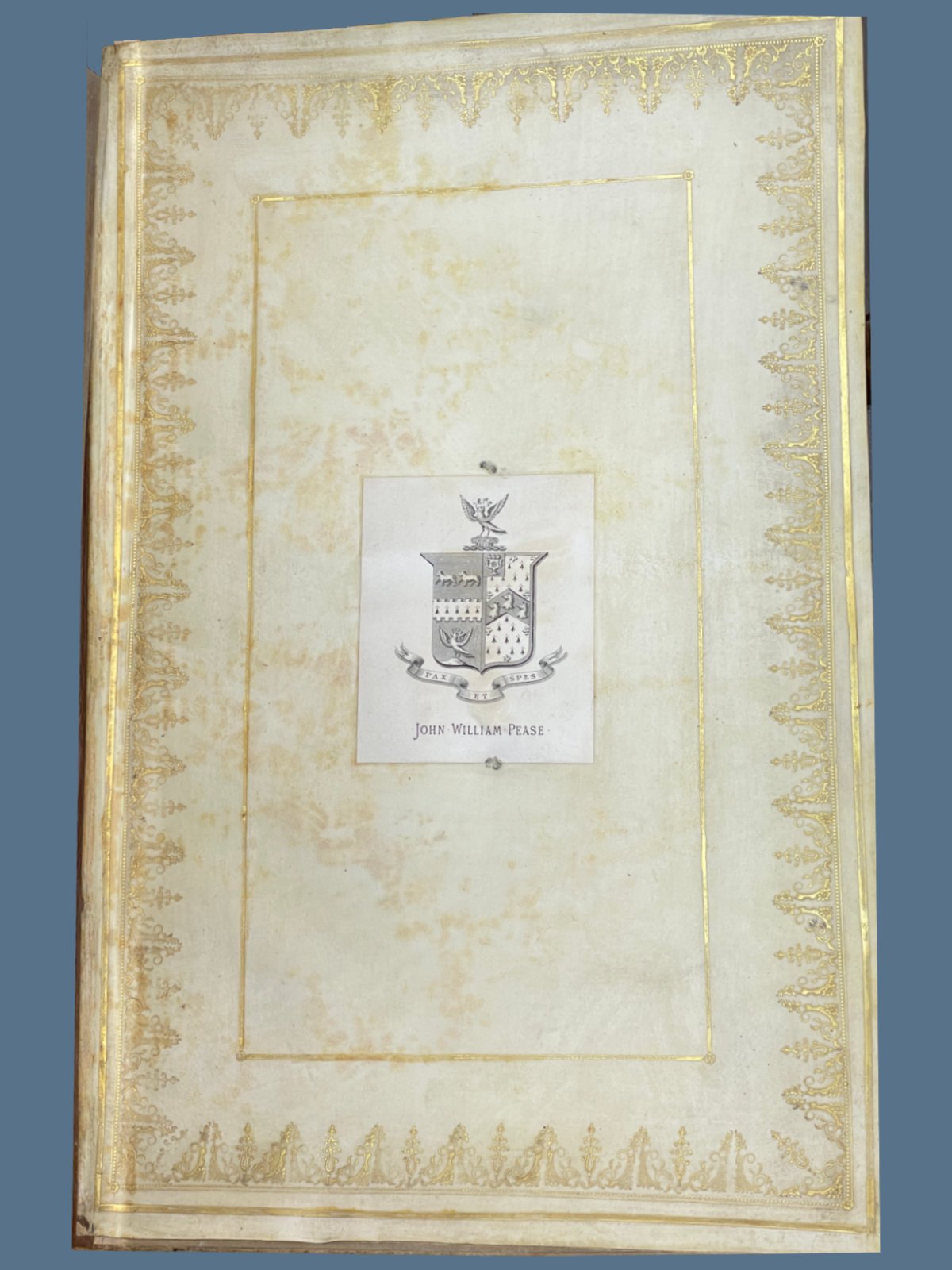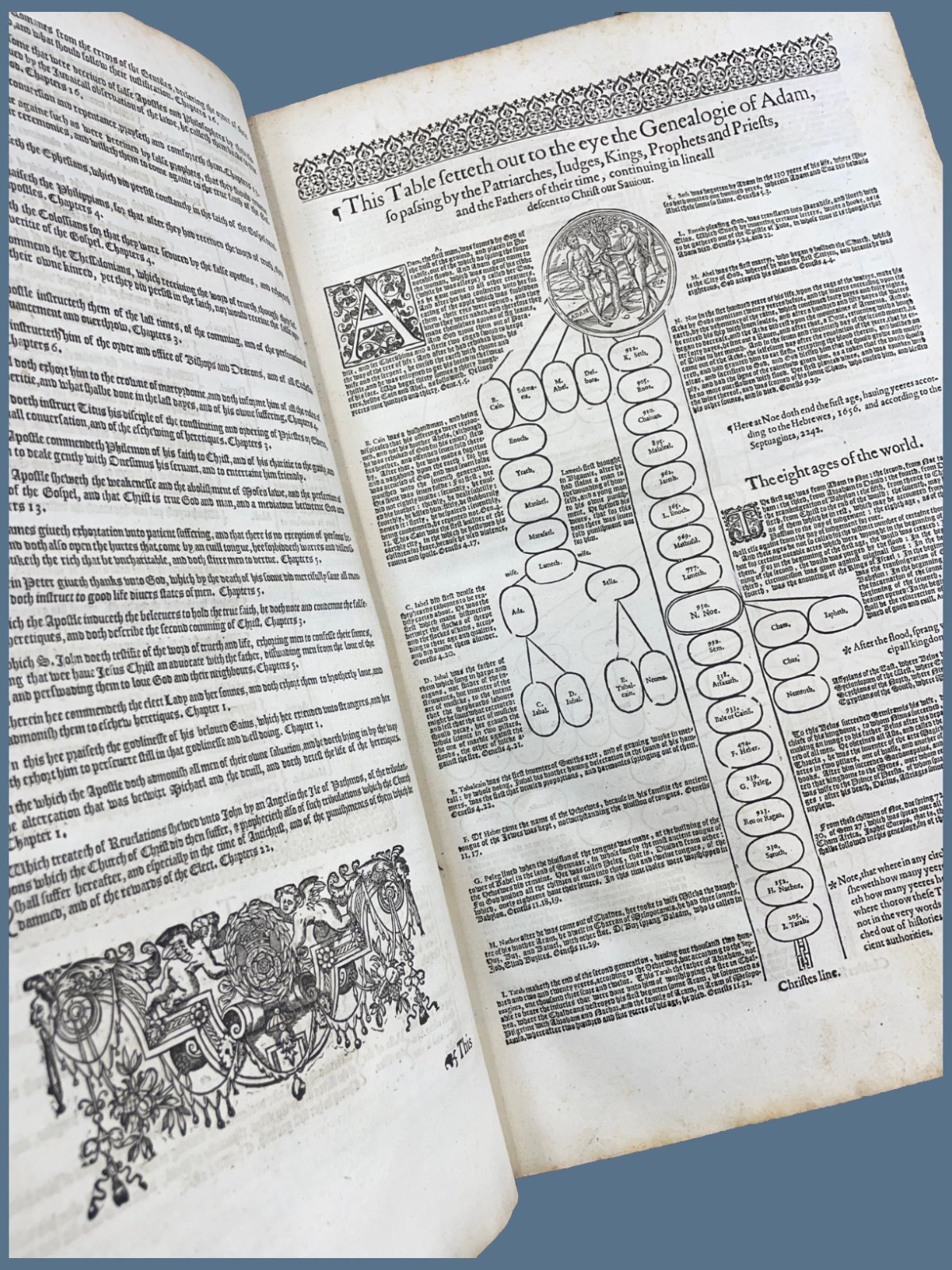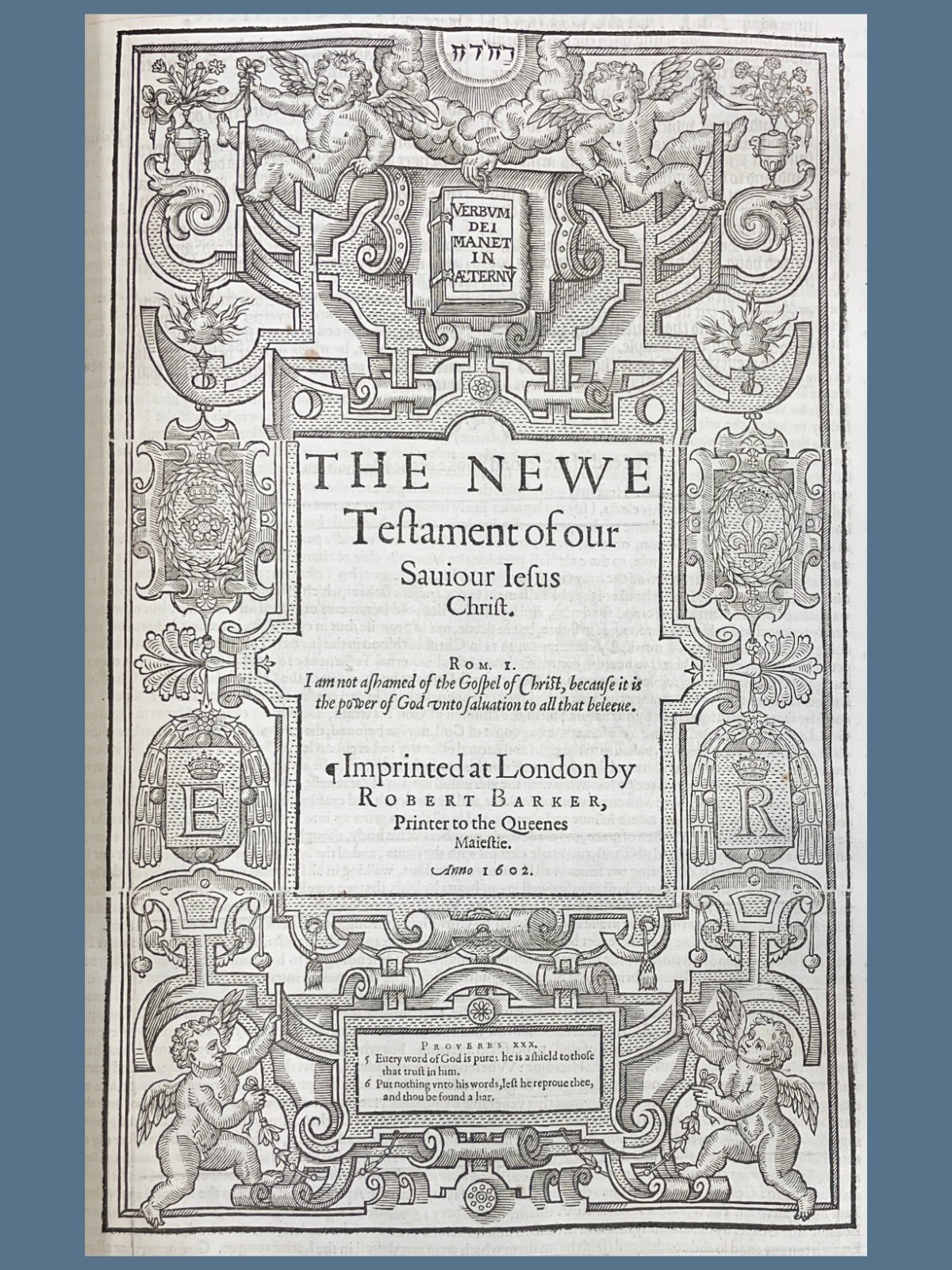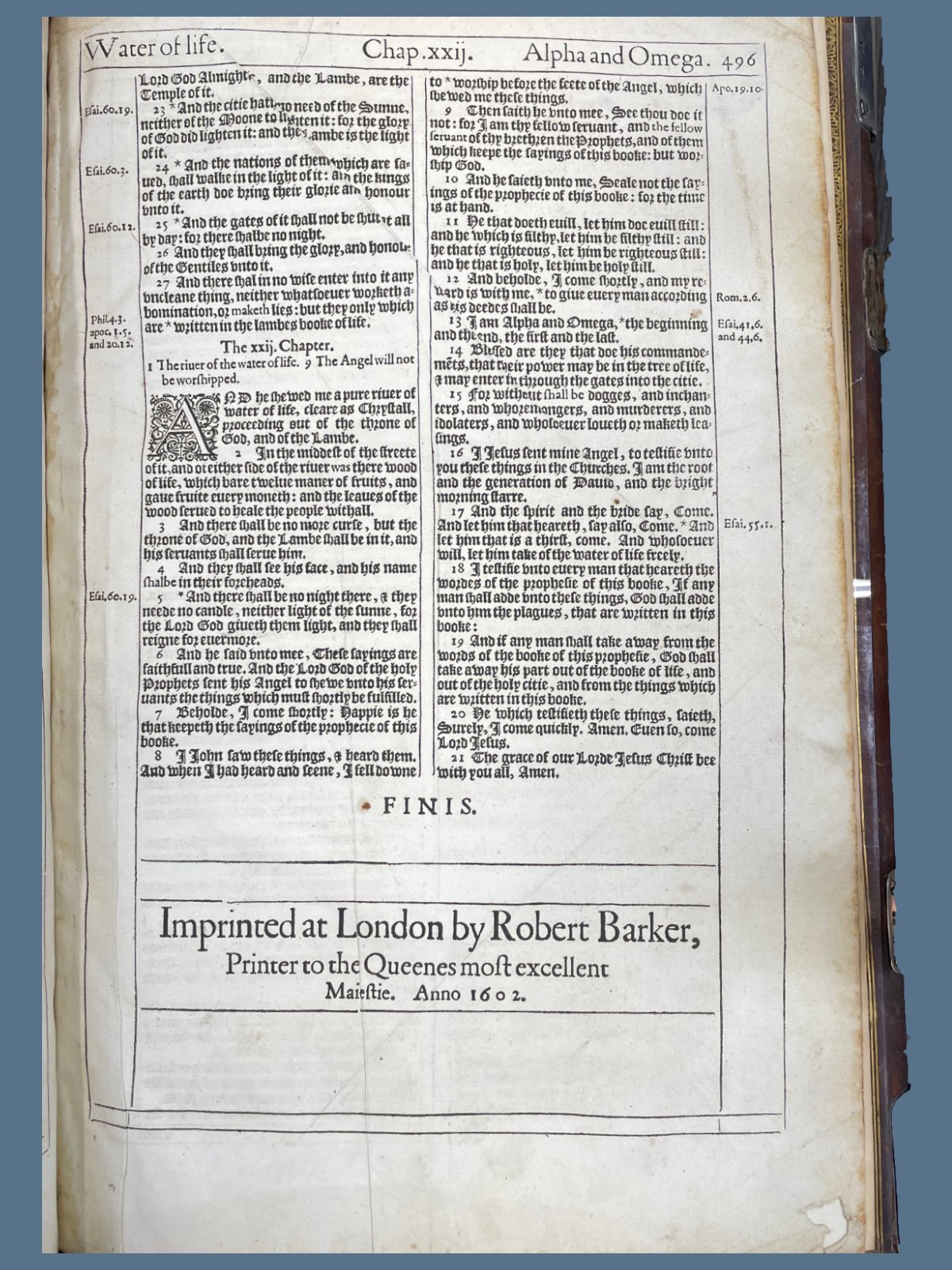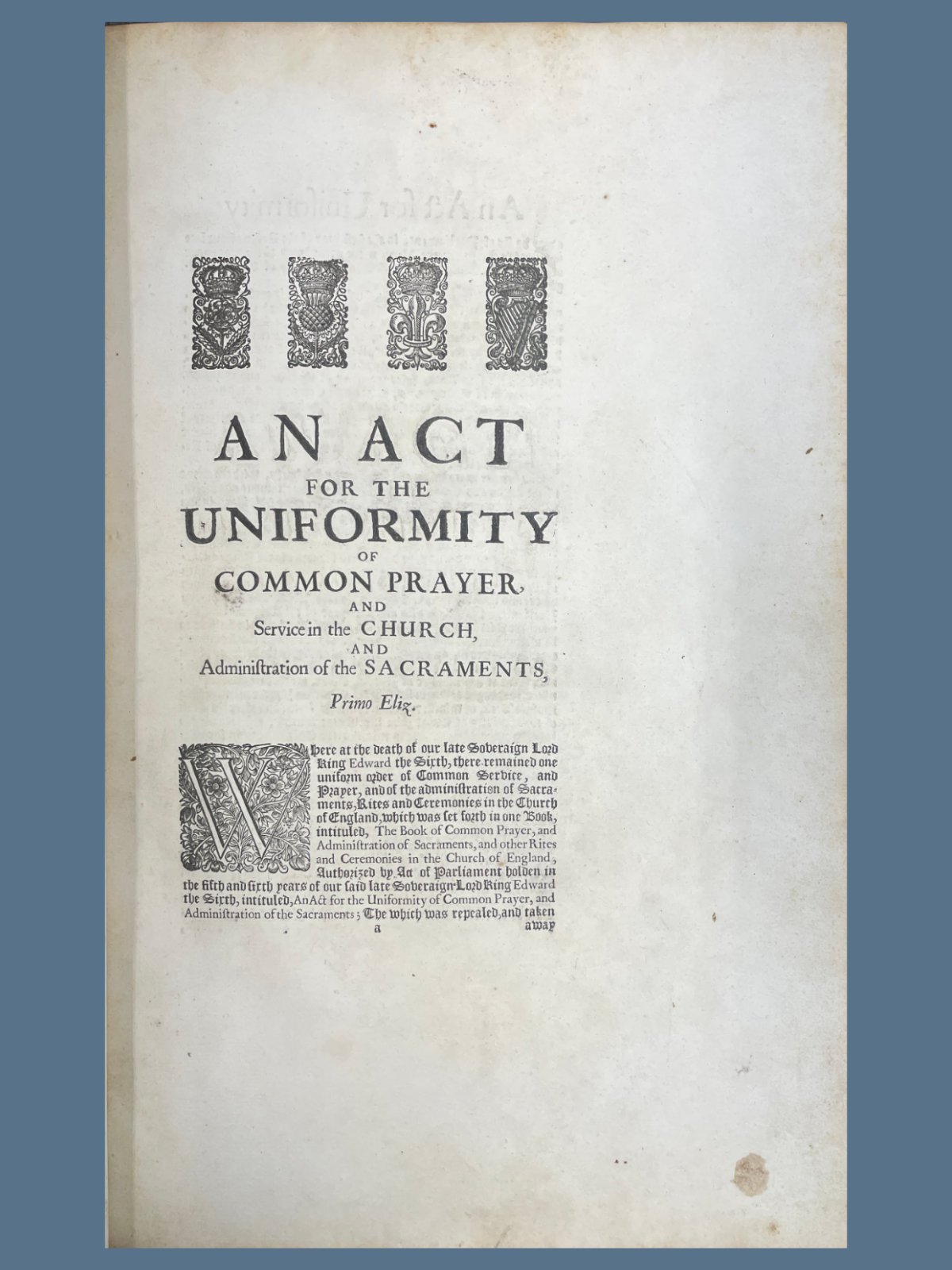The Holy Bible, Containing the Old Testament and the New. Authorized and appointed to be read in Churches… London: Robert Barker, 1602. [With] The Book of Common Prayer. London: John Bill & Christopher Barker, [1662].
Summary
A 1602 pulpit folio Bishops’ Bible used as the base text for the King James Bible with the 1662 editio princeps of the modern prayer book with provenance of an important aristocratic family. Both pulpit folios are sumptuously bound as a matching set over beveled oak boards with detailed blind-tooling and silverwork.
Description
Bible - General title page (1602) with the first appearance of what would become the title page for the 59-line He and She Bibles. The twelve tribes, the twelve apostles on each side, the four evangelists with their gospel symbols around the letterpress, and the slain lamb in the center with the tetragrammaton above. Calendar printed in red and black. Full-page woodcut of Adam and Eve in the Garden before Genesis. Text within ruled border, in two column black letter with 72 lines to the full column. Title page to the Apocrypha present. New Testament title page (1602) with architectural border. Woodcut maps, first chapter initials and decorated head and tailpieces throughout. Book of Common Prayer – Engraved general title page (n.d.) by David Loggan. Calendar printed in red and black. Single column black letter with very wide margins. Numerous woodcut initials and headpieces.
Collation
Bible - A-C^6, A-Z^6, Aa-Zz^6, Aaa-Zzz^6, Aaaa-Nnnn^6, Oooo^4. Book of Common Prayer - A^2, a-d^6, e^2, A-Z^6, Aa-Ee^6, Aa-Mm^6, Nn^8, *^6, Oo-Rr^6, Ss^8. Complete.
Binding
Brown calf over beveled oak boards, both volumes expertly rebacked. Boards elaborately tooled in blind with silver clasps, center- and cornerpieces. Spines with five raised bands, compartments tooled in blind, and titles and dates lettered in gilt. Calf doublures. Gilt-stamped vellum endpapers. All edges gilt and gauffered.
Condition
Pages crisp, clean and bright with minimal toning and spotting in a handful of places (e.g. lower margin of title page); printed on thick paper; bookplate of John William Pease to front endpapers; bookplate of D.B. to rear endpapers; blank leaf with manuscript records of Sherard family at front of prayer book.
Provenance
The Sherard family (manuscript leaf and crest to centerpieces) — John William Pease (1836–1901) by descent to the heirs of Wardington; offered at Sotheby’s Wardington Library sale, 2006. The Sherard family was an important aristocratic family. Robert Sherard inherited the peerage from his father, Philip Sherard. Robert was also known as the 6th Earl of Harborough, styled Lord Sherard. Robert never married, instead having a long-term relationship with a married woman, the actress Emma Sarah Calcroft Kennedy. His library was sold in London by Sotheby, Wilkinson & Hodge on 9 June 1864.
Note
The last printing of the Bishops’ Bible and, as the note in Herbert puts it, “presumably [the one] used by the King James’ translators” in their work. Robert Barker, who held the patent for printing the Bishops’ Bible, provided 40 unbound copies of the 1602 edition for the project. This edition resembles the 1611 King James Bible in form and text more than any other. When Charles II became king in 1660, the Book of Common Prayer regained popularity, sparking debates over its content between Presbyterian divines and the Church of England. Charles established a Royal Commission comprising twelve bishops appointed by the state and twelve other divines and tasked with reviewing and suggesting changes. This led to the Savoy Conference, where approximately six hundred sections were revised. On May 19, 1662, Charles approved these changes, and the updated book was published. It remained largely unchanged for the next 300 years.
References
Bible - Herbert 271; STC 2188; ESTC S122093; Luborsky 2188. Book of Common Prayer – Wing B3622; ESTC R3118; USTC 3079367.


